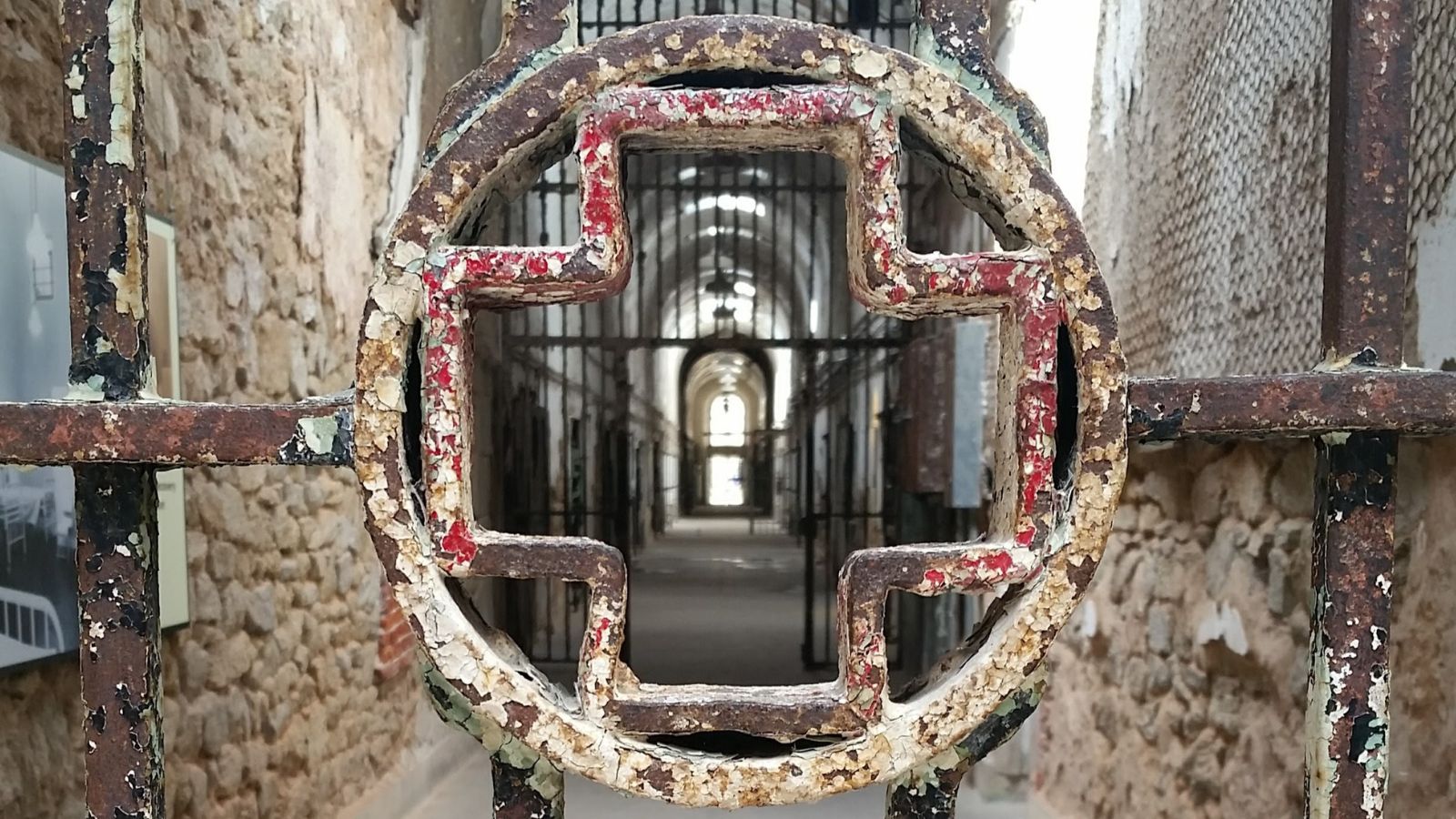There is so much to see in Philadelphia, from museums to beautiful public squares. Ironically, an old rundown prison is one of the most intriguing tourist attractions. Once a fair distance from the hub of Philadelphia, it is now surrounded by an urban neighborhood. Let’s tour The Eastern State Penitentiary Historic Site (ESPHS).
Aerial View of Eastern State Penitentiary
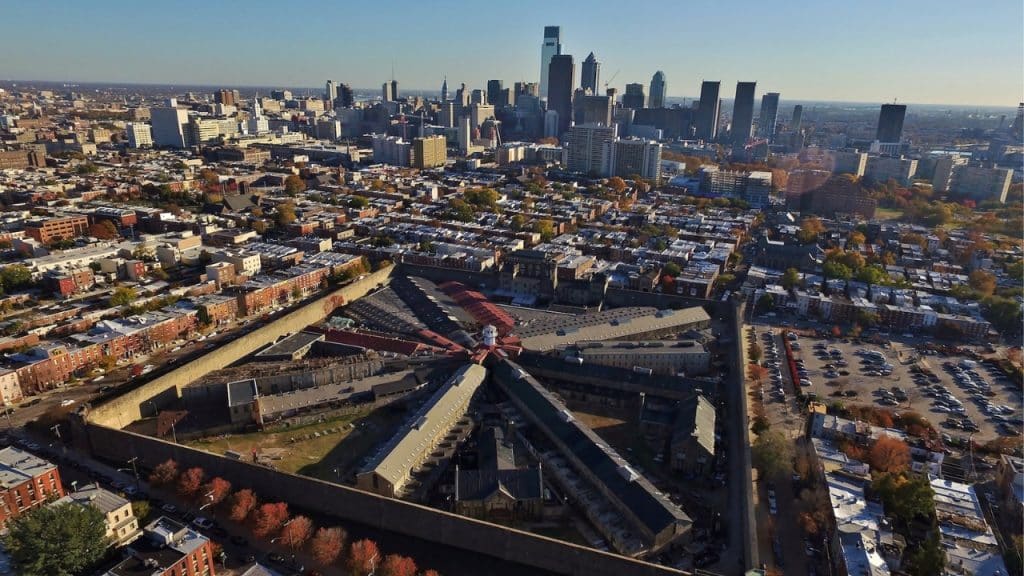
Formerly recognized as the world’s most renowned and expensive prison, the vast Eastern State Penitentiary operated from 1829 to 1970. It was instrumental in popularizing the idea of imprisonment as a means of reform (hence the term “penitentiary” for penance). Today, this historic site, once home to notorious figures such as Al Capone, offers self-guided tours that delve into its past and examine contemporary incarceration and social justice issues.
Front Penitentiary Walls
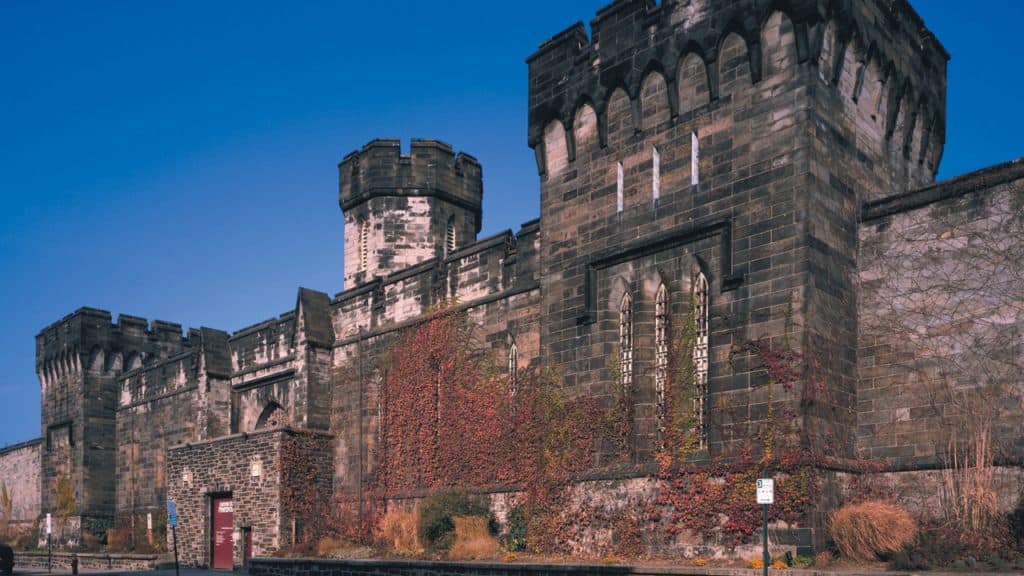
Built to keep inmates in and the rest of the world out, ESPHS has walls 30 feet tall—with an additional 10 feet below ground level, battlements crossing the roofline and towers. This building resembles a castle, fortress, and, some would say, a dungeon on the outside.
Entering the Penitentiary
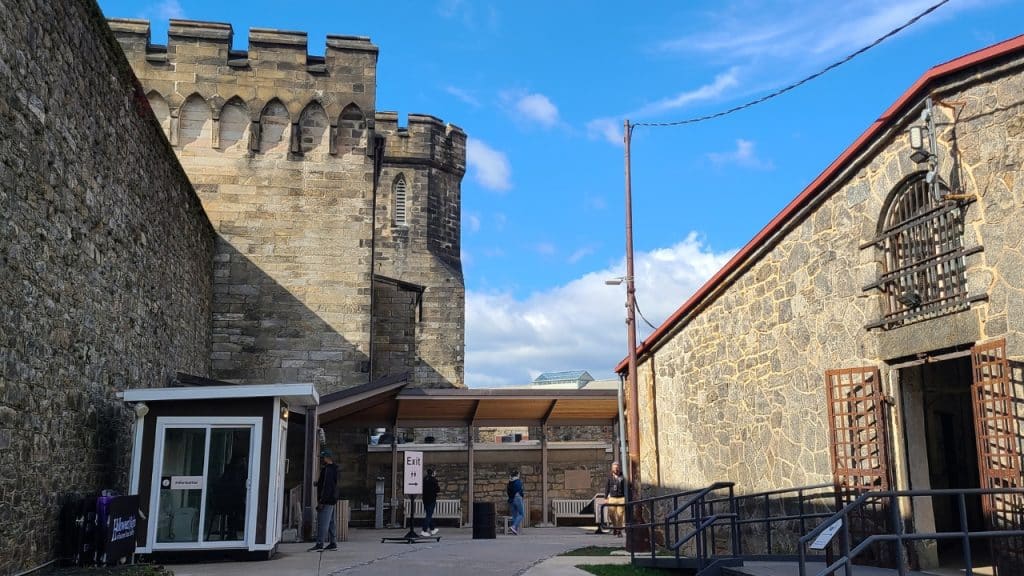
“The Voices of Eastern State” Audio Tour is included with admission. Take a 40-minute audio tour narrated by actor and director Steve Buscemi ((Boardwalk Empire, Fargo, Armageddon, Ghost World). He guides you through the penitentiary and highlights important events.
ESPHS guides lead “Hands-on History” tours. These short tours take place throughout the penitentiary and last five to twenty minutes. An Eastern State educator engages visitors by leading an activity, exploring a special topic, or sharing a space not otherwise open to the public.
2nd Floor Cellblock 7
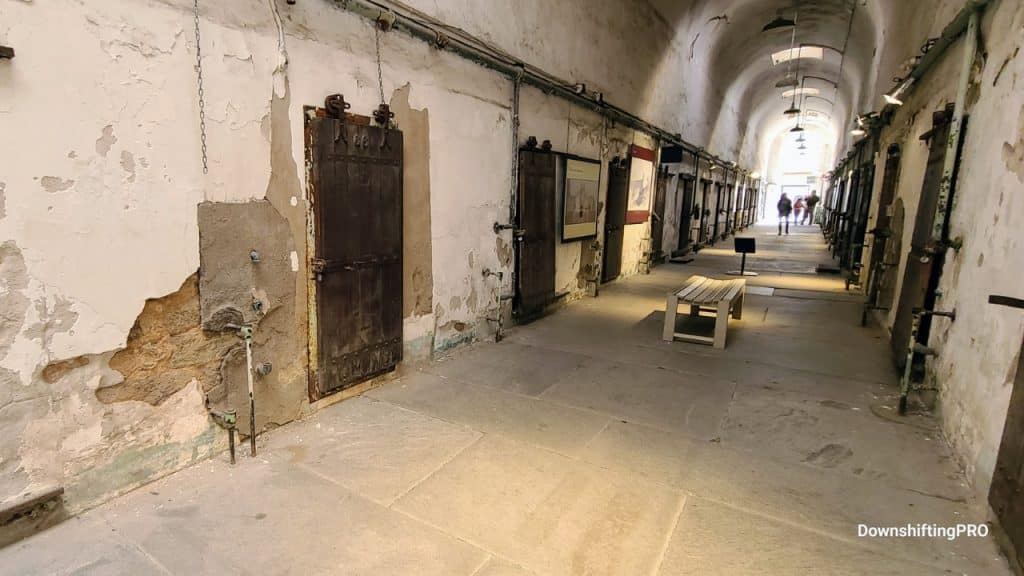
ESPHS was the world’s first true penitentiary. It was designed by John Haviland and was set up so each prisoner was alone in their cell.
Inside a Cell
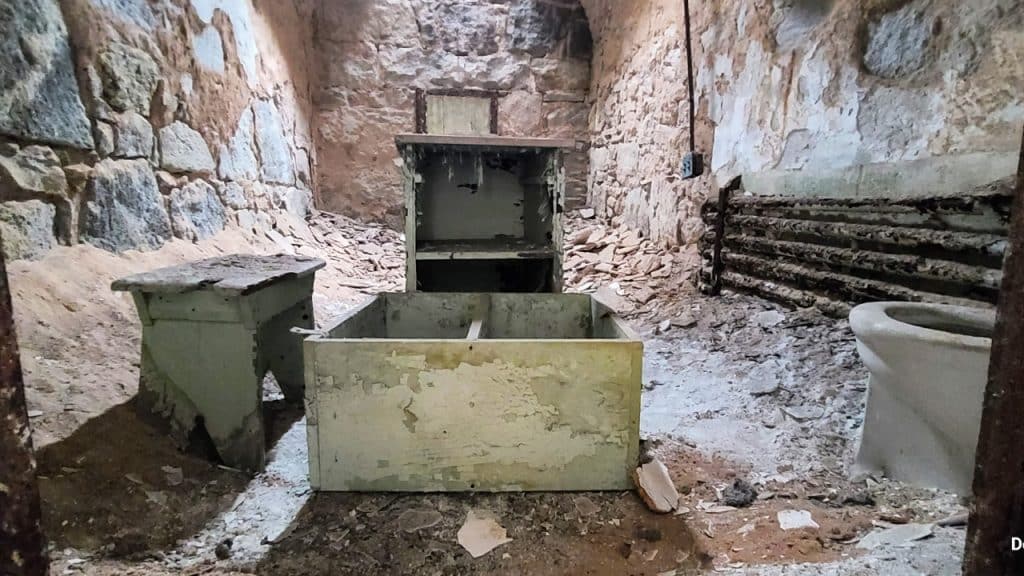
After witnessing the crowded and appalling conditions in the city jails, concerned citizens banded together to make a change. They met just after the American Revolution in Benjamin Franklin’s home and were named “The Philadelphia Society for Alleviating the Misery of Public Prisons.”
Solitary Confinement
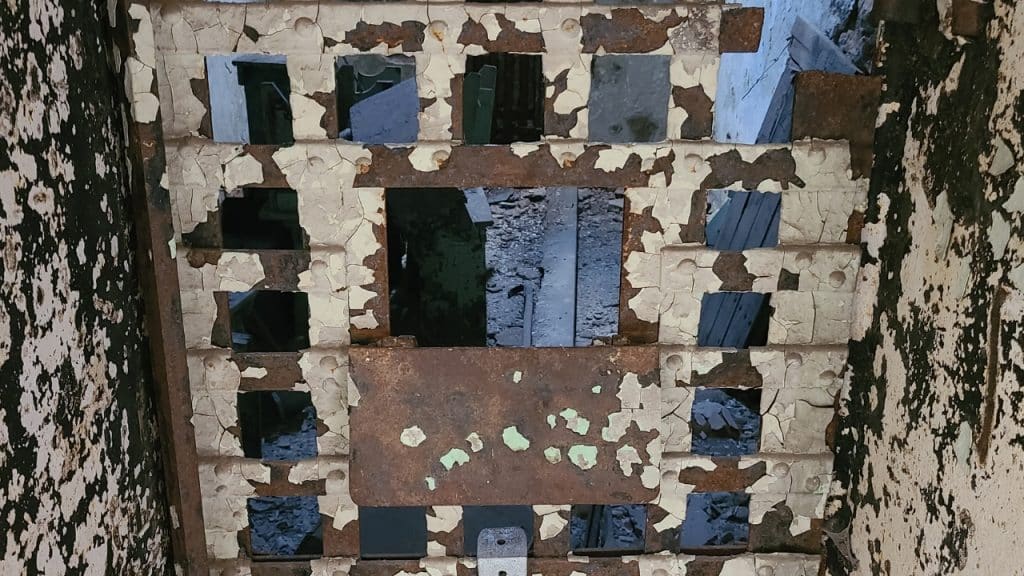
Confined for up to 23 hours a day, solitary confinement was not seen as a punishment but as a way to provide time for the prisoner to reflect and repent. The feeding hole was a way to pass food to the prisoners. There was only one door connecting to the yard.
John Currin’s Cell
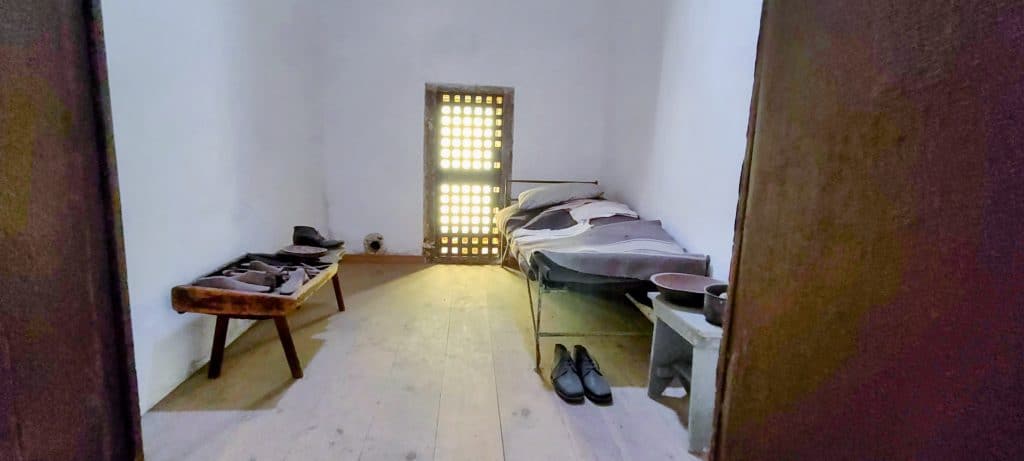
John Currin’s Cell – Each cell was roughly 8′ x 12′ and had a steel-framed bed, a workbench, and a cast iron toilet that was flushed once a day with water. Remember, in 1830, there was no running water, and even in the White House, President Andrew Jackson still used a chamber pot.
Center block
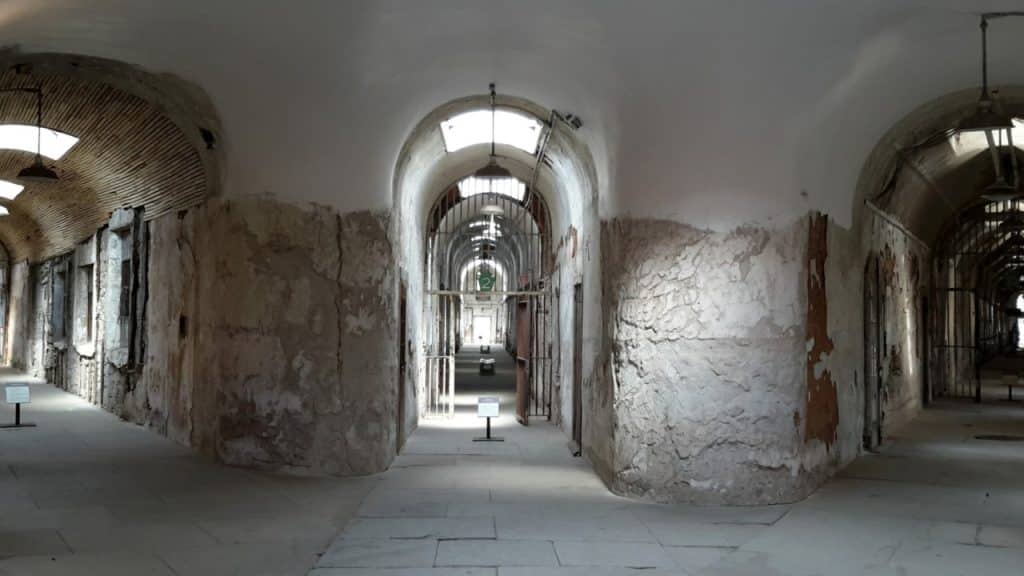
Laid out like the hub and spokes of a wheel, seven one-story cellblocks radiate from this central point. From this center block, you can stand here, turn in a circle, and see all of the corridors.
Abandoned Cellblock
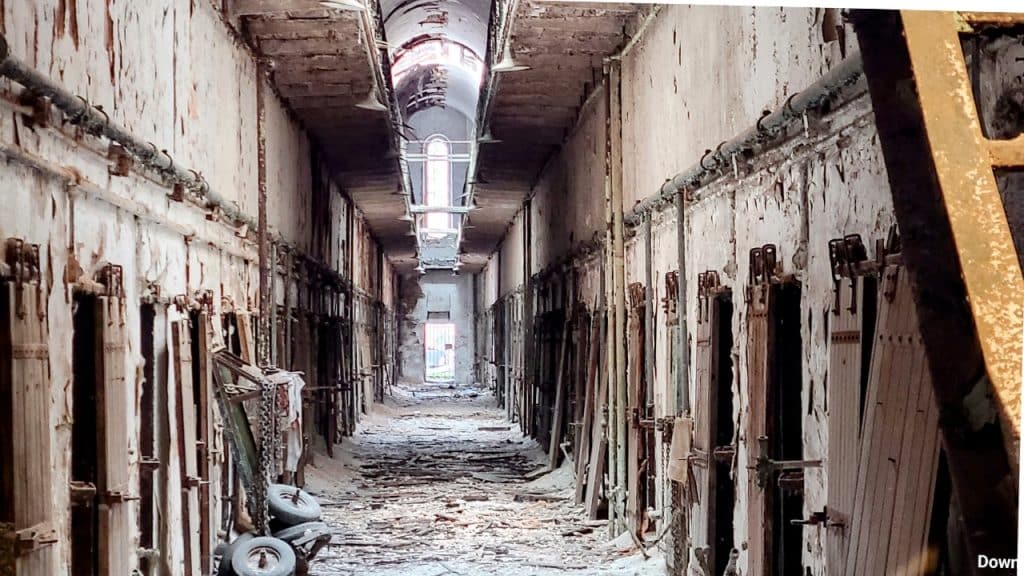
Female prisoners were housed in Cellblock 2 until 1923, when they were moved out to (then named) “Muncy Industrial Home for Women.” State Correctional Institution (SCI) Muncy remains open today and is a medium/maximum security prison for women.
Second Floor Cellblock
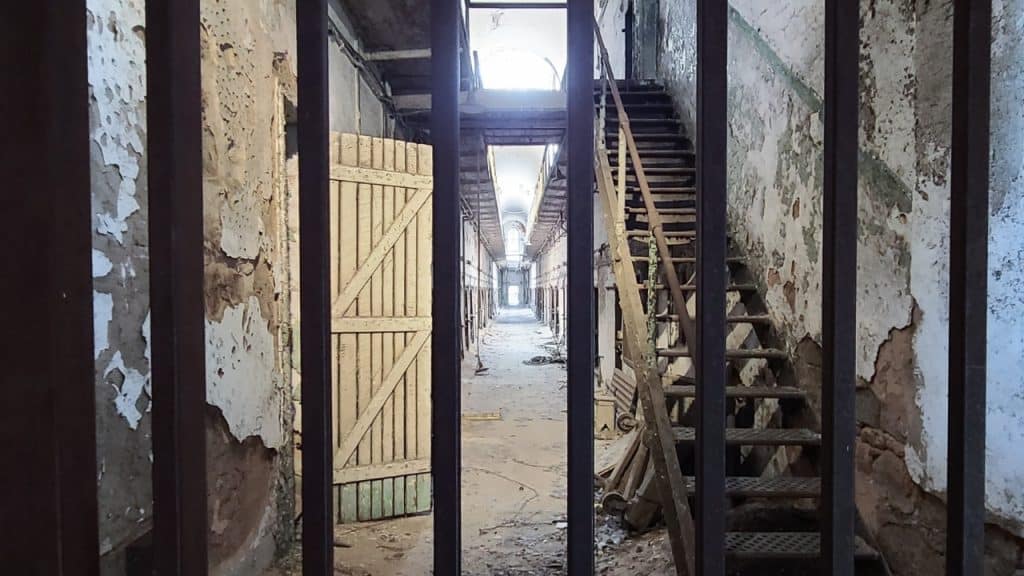
Originally built to house 250 prisoners, a second story was added to Cellblocks 4, 5, 6, and 7 by Needing more room. Visitors can walk around the penitentiary, but only a select few are accessible. Otherwise, you can see the other cellblocks and their demise. Walking around is a bit eery but very interesting.
Cellblock 7 Gallery
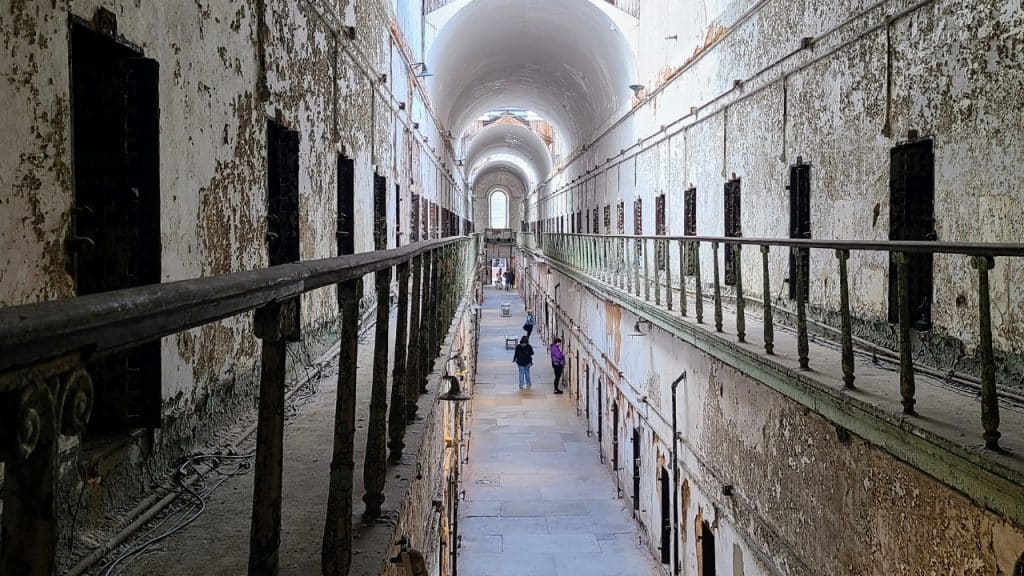
Cellblock 7 30-foot, barrel vaulted ceilings. This prison became the blueprint for roughly three hundred prisons on five continents. One of the most impressive is the Kilmainham Gaol in Dublin.
Infirmary
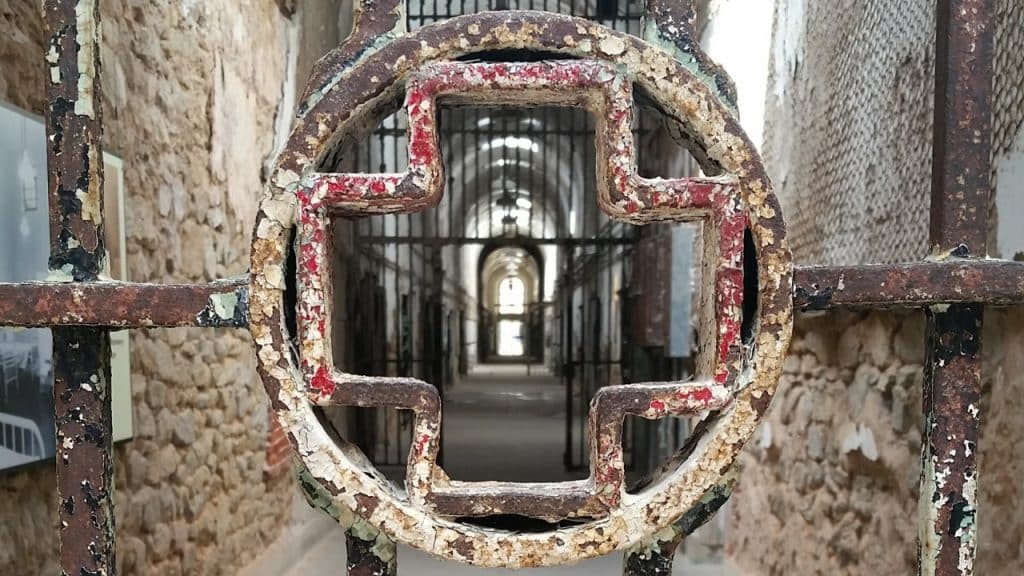
The Infirmary is located in Cellblock 3, Eastern State Penitentiary’s hospital block. Notice the Red Cross in the gate. The hospital had operating rooms, recovery rooms, X-ray machines, and a full pharmacy
Exercise Yard
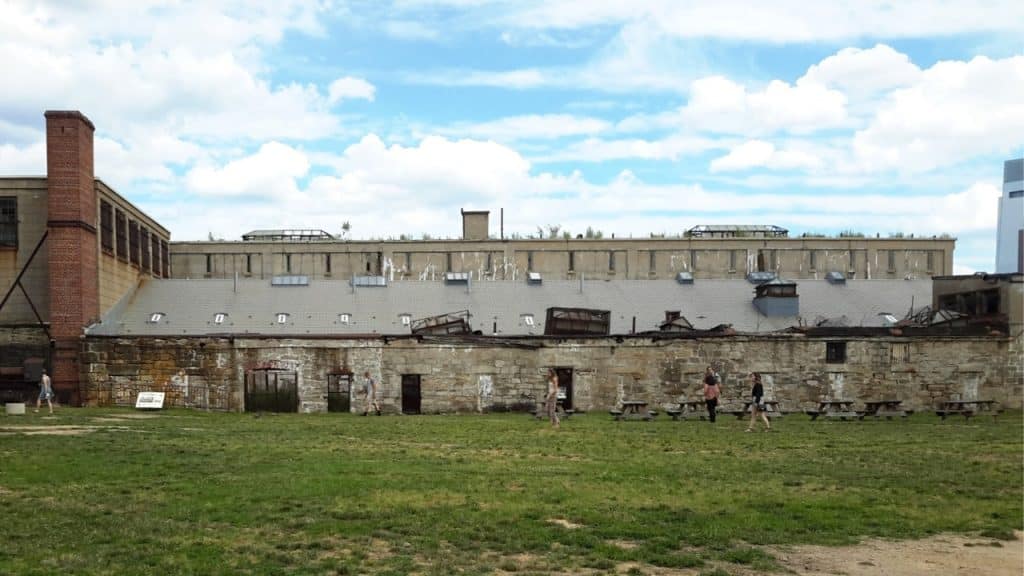
The larger yard where inmates exercised and played baseball and football. Teams were segregated at first but then became mixed. It now is where you can see the mass incarceration in America 3D graphs.
Guard Tower
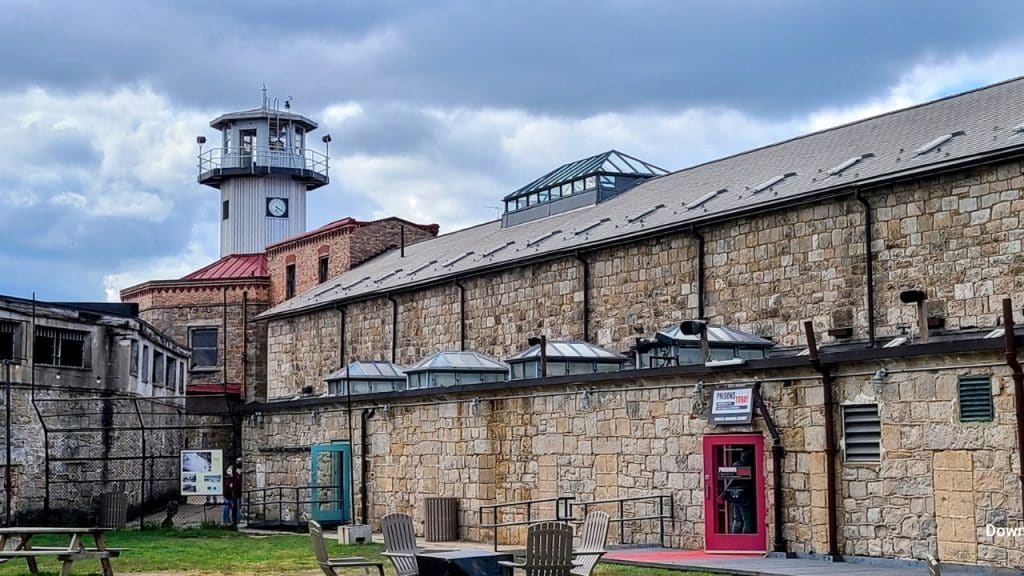
In the 1950s, a more modern watchtower was built to survey the grounds. On a side note, you can take an online tour of ESPHS. To learn more, listen to and read the transcripts of the audio guide; you can also access that on the ESPHS website. This area houses the “Prisons Today” exhibit illustrating different aspects of prison life in the 21st century.
Trying to Escape
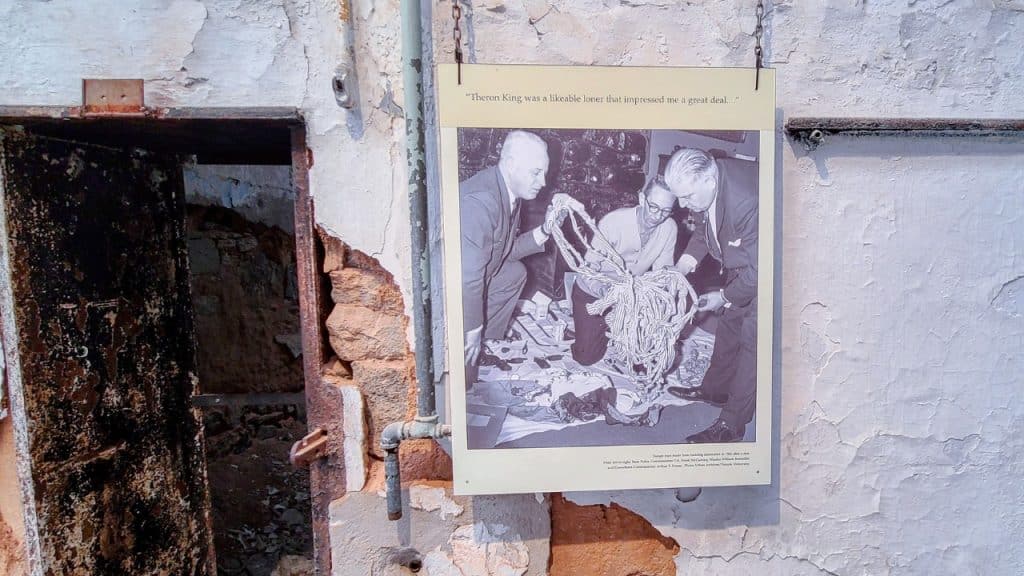
Throughout the prison, you will see photographs and plaques illustrating life in prison. Many are from the 20th Century. The audio guide also has first-person accounts of prisoners at ESPHS before its close in 1971.
The Small Courtyard
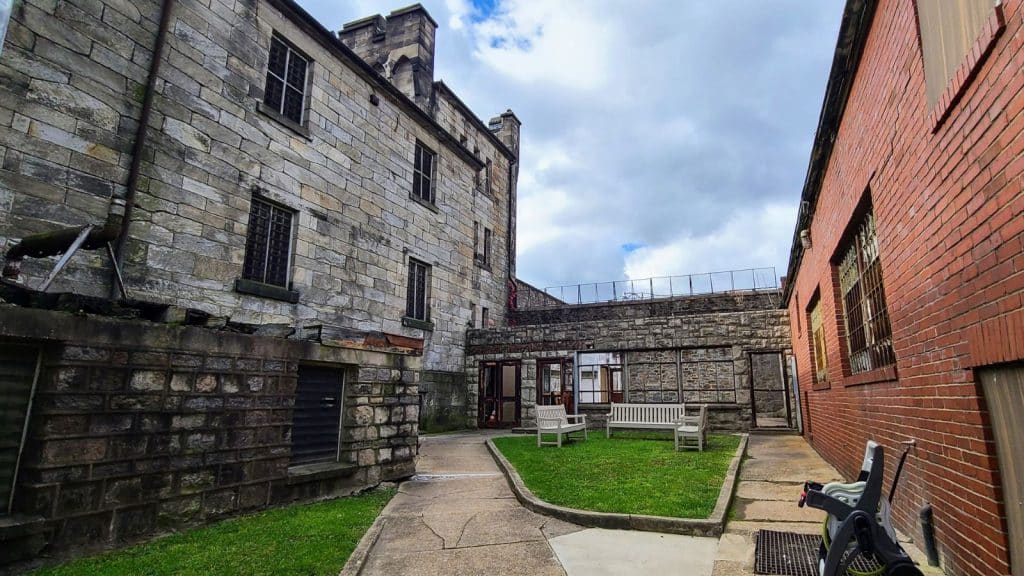
One of the small courtyards outside Cellblock 4 at the Eastern State Penitentiary Historic Site is nestled between two very different buildings that vacate this 11-acre prison.
Al Capone’s Cell
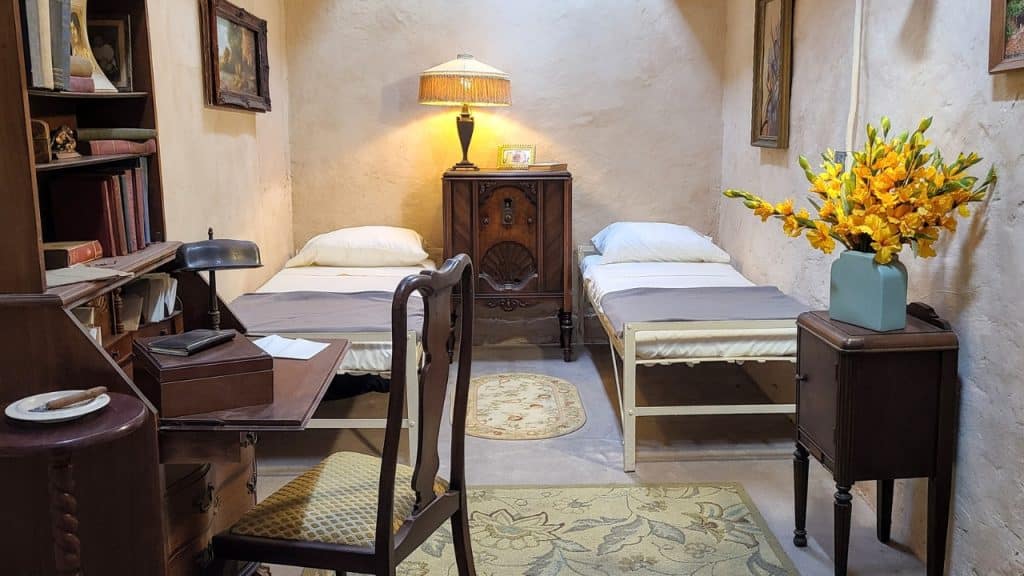
Traveling from Atlantic City to Chicago, Al Capone and his bodyguard stopped in Philadelphia overnight. The police recognized him and arrested both for carrying concealed deadly weapons. For his conviction, they served one year at Eastern State Penitentiary. No ordinary prisoner, Al Capone was allowed real furniture and other privileges.
Prisoners in the Yard
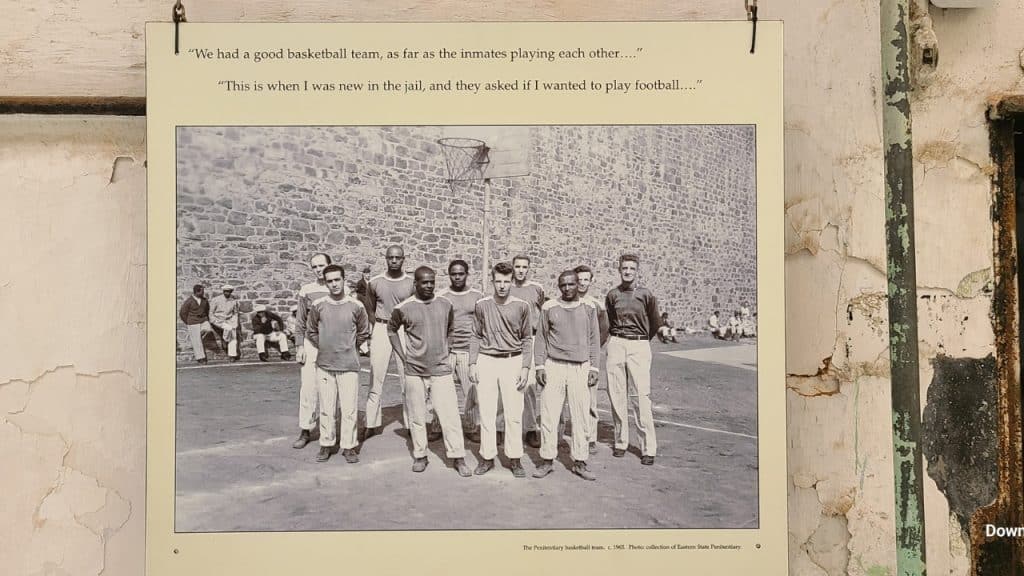
Once solitary confinement in individual cells was abandoned, prisoners were allowed to socialize in the yard. Prison stories and accounts of life at ESPHS educate visitors on how this correctional facility housed prisoners for over 140 years. Although an unusual tourist attraction, it is certainly worth a visit if you are in Philadelphia.
More on Philadelphia
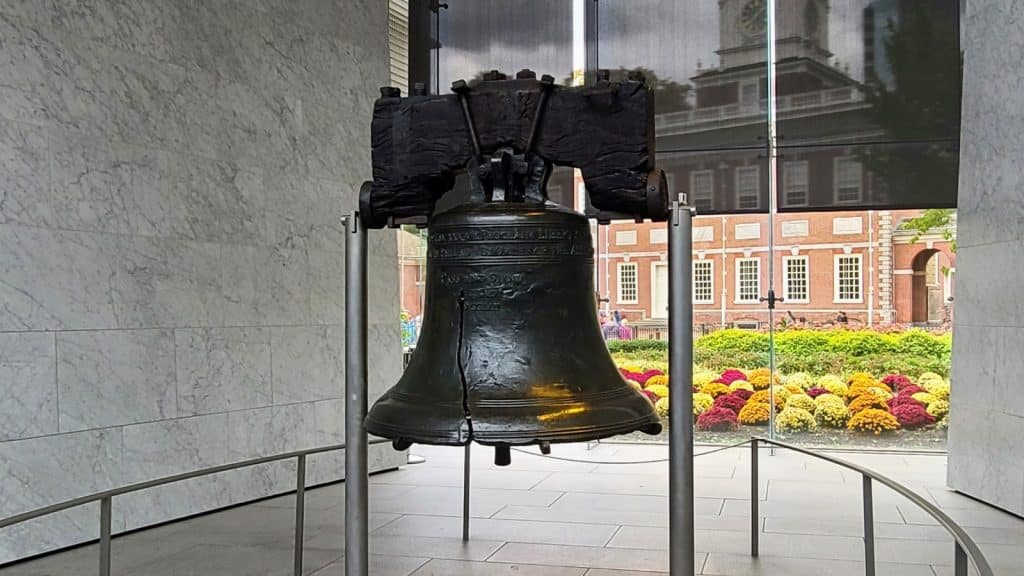
Other interesting places to visit in the City of Brotherly Love – Philadelphia.
- The Enigmatic 14: Philadelphia’s Best-Kept Museum Secrets and Number 13 Will Stun You!
- Unlocking Philadelphia: CityPASS® Your Key to Capturing Memorable Moments
- Breathtaking Murals in Philadelphia – MuralArts.org – Philly Mural and Mosaic Tours
Margarita Ibbott is a travel and lifestyle blogger. She blogs about travel in Canada, the United States and Europe giving practical advice through restaurant, hotel and attraction reviews. She writes for DownshiftingPRO.com and other online media outlets.
